Outforia Quicktake: Key Takeaways
- Cetaceans, including whales, porpoises, and dolphins, have specialized adaptations to nurse their young underwater. The calves roll their tongue into a tube around the mother’s inverted nipple to avoid milk spillage.
- Whale milk is much more concentrated in fat than human or cow milk, which helps the calves drink it and provides a rich source of nutrients for building vital body fat reserves.
- Whales and large land-based animals shared an early mammal ancestor that used to walk on land; therefore, whales are classified as mammals, not fish.
- The gestation period for a whale is from 10-18 months, and baby whales or calfs drink their mother’s milk for several years.
- Whale mating dynamics vary with species; some males fight, some perform acrobatic stunts, and others sing elaborate songs to gain a female’s attention.
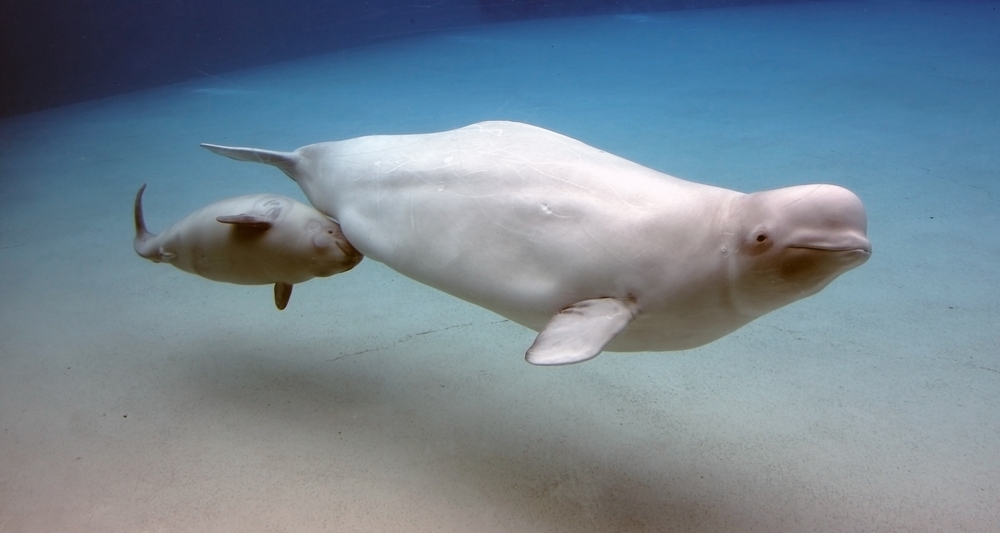
Imagine trying to drink milk underwater, without a straw. It’s not easy! This is a problem that the world’s cetaceans, including whales, porpoises, and dolphins, have had to overcome. They are mammals like us, and they feed milk to their young.
Baby cetaceans must gain weight as quickly as possible to avoid starvation in freezing waters or predation. They must take in as much of their mother’s rich fatty milk as possible.
Whales and other cetaceans have special adaptations that allow mother and baby to nurse underwater. Without these, the vital mother’s milk would be lost to the ocean water.
You May Also Like: How Long Do Sharks Live? Unraveling The Mystery
How Whales Drink Milk Underwater
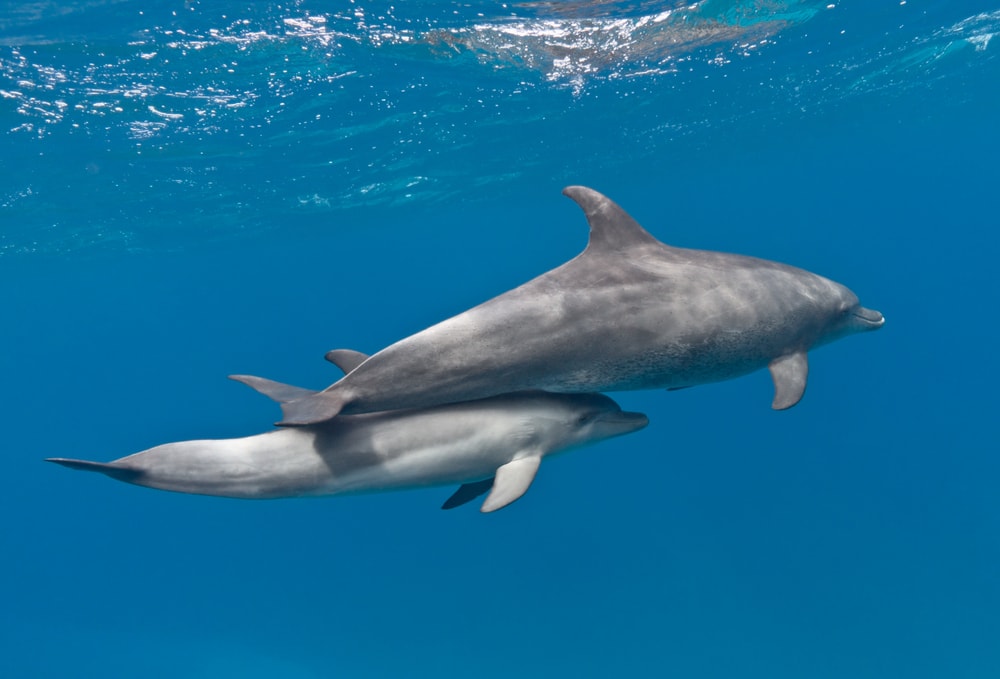
While whales do have nipples, they aren’t the same as the nipples of a land based mammal. Cetacean nipples are inverted. They point inward instead of out. They are enclosed in two slits called mammary slits.
Male cetaceans sometimes have vestigial nipples either side of their genital opening, in the same place as the females. They can’t produce milk, though.
When the baby cetacean wants milk, it swims underneath the mother and nudges at her mammary slits. The mother then releases the nipple for the baby to feed. However, the way the calf feeds is very different from the way a baby cow would feed.
- Tubular tongue: The calf rolls its tongue into a tube around the nipple. This ensures that no milk is split and lost into the water. There are even finger-like projections around the tongue that act like a zip.
- Mother controls the amount of milk: Usually in mammals, the baby controls how much milk they will drink. In whales and dolphins, the mother controls how much milk the baby drinks. She squirts the milk into their mouths.
- Fatty, thick milk: Whales produce thick, rich, very fatty milk. This means it doesn’t dissolve easily in seawater.
What Is Whale Milk Made Of?
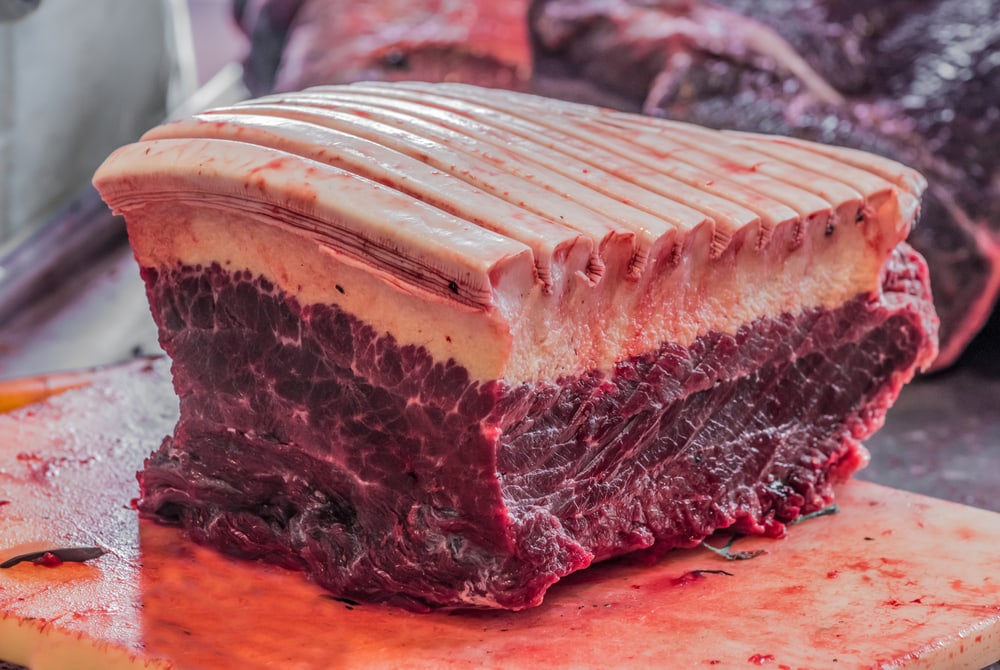
According to a study done on three dead female fin whales, the flavor of whale milk is like cod liver oil or slightly fishy. It has four times the solids present in human milk once evaporated. Fin whales are a species of baleen whale.
Compared to human milk, fin whale milk has these attributes:
Fin Whale Milk vs Human Milk
- 13.3% protein compared to 1.7% for human milk
- 53.4% water compared to 87.5%
- 33% fat compared to 3.5%
- 0.3 -1.4% lactose compared to 7.1%
- 1% minerals compared to 0.2%
Blubber Fat
Whale milk is much more concentrated in fat than human or cow milk. This helps the baby whale drink it. It also provides a rich source of nutrients for building vital body fat reserves.
Some whales live in or migrate to very cold environments. Without this body fat, called blubber, they wouldn’t survive.
The thick layer of body fat can be clearly seen on this piece of minke whale for sale as meat in Greenland. This layer of blubber is also the most valuable part of Inuit food. To offer this part of the meat to a visitor is a true honor.
Gestation, Motherhood, and Baby Whales
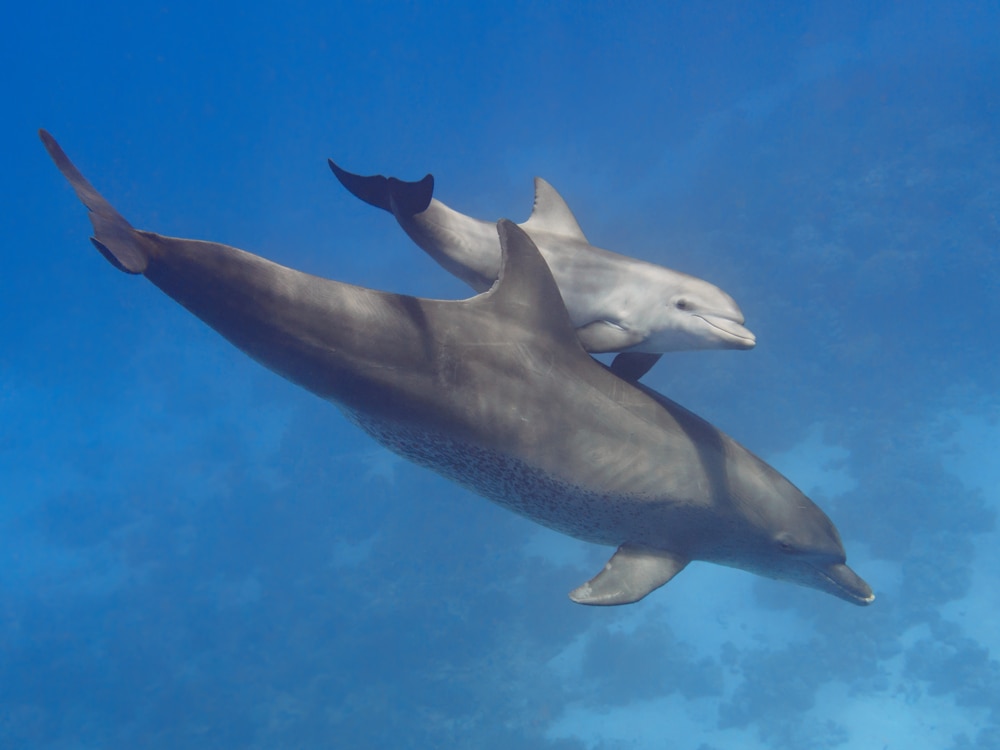
The gestation (pregnancy) period for a whale is from 10-18 months. It’s 10 months for a blue whale and up to 18 months for other species.
Giving birth usually happens in the colder months. Many species migrate to warmer waters during this event. A good example of this is the North Pacific Humpback Whale, which migrates to Hawaii to give birth and raise her calf.
Baby whales drink their mother’s milk for several years. During this time, they are still known as calfs.
Why Are Whales Classified as Mammals and Not Fish?
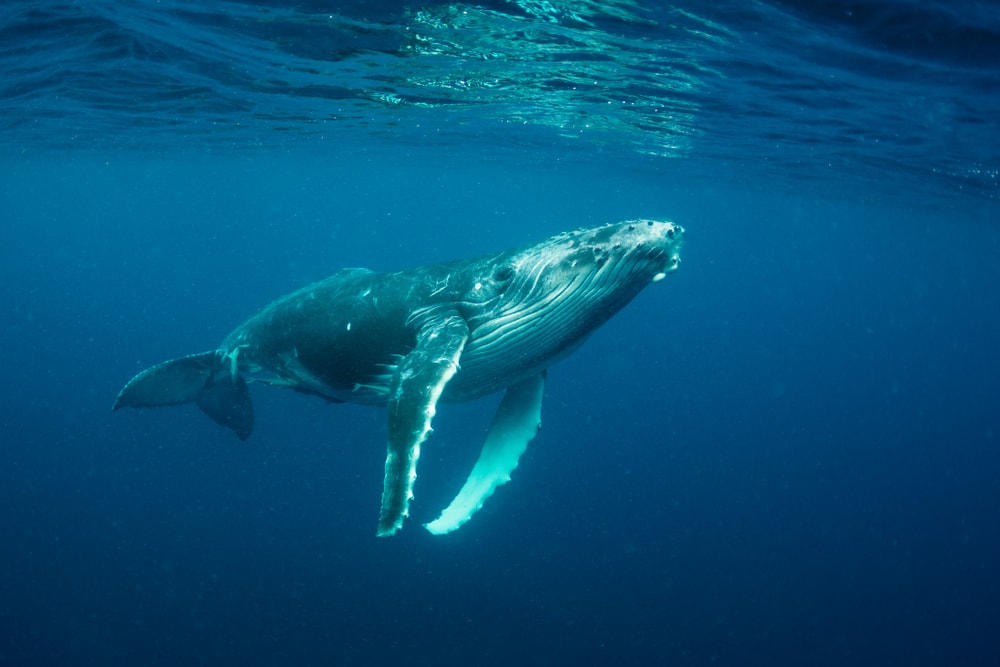
Whales are classified as mammals. This is partly because they share a common ancestor with land based mammals. The early ancestors of both whales and large land based animals walked on land.
You can still see the vestigial limb bones of this early mammal as part of the skeleton of a cetacean. Whales went back to the water, while hippos and elephants adapted to life on land.
They also have the following features that group them with mammals:
- Three bones in the inner ear
- They feed their offspring milk they have produced themselves
- They are warm blooded, not cold blooded
- They breathe air with lungs. Fish breathe water using gills.
- Their tail moves up and down, not from side to side.
- Whales give birth to live young. They don’t have eggs as fish do.
Ambulocetus was an early whale that had legs. During the Eocene period, it walked on land and hunted in water. This species then returned to the water full-time and its legs became flippers.
You May Also Like: How Do Dolphins Sleep? With One Eye Open
How Do Whales Mate?
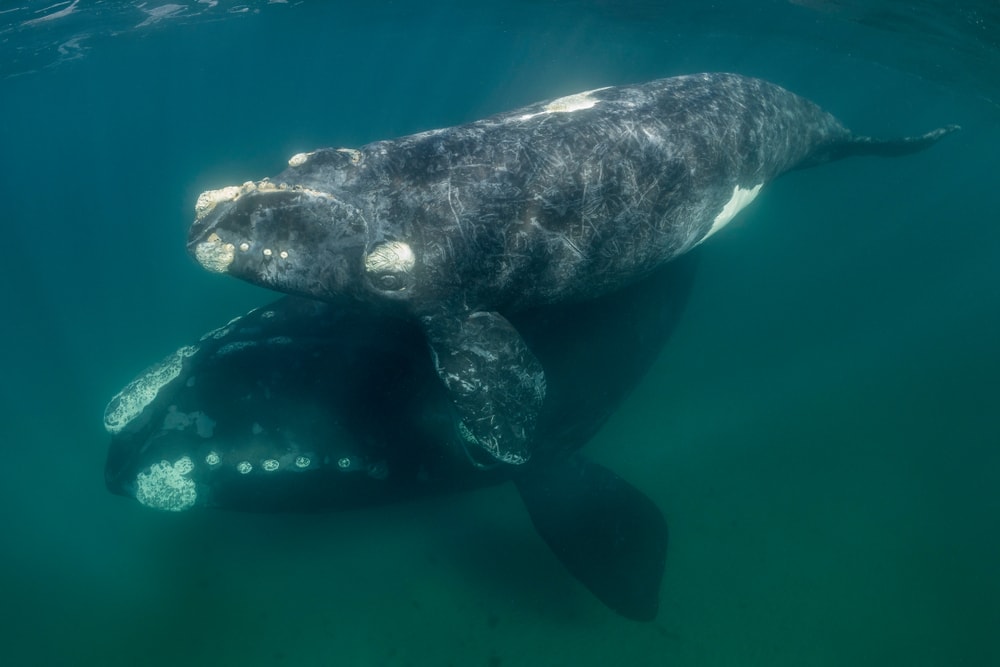
Male whales will compete to mate with females. How they do this depends on their species.
Some whales, such as beaked whales, will fight and scar each other with their teeth. Others perform acrobatic stunts to gain a female’s attention. Still, others will herd off a female to prevent other males from reaching her.
Here are some of the most outstanding ways males will compete to get their genetic material passed on.
Humpback Whales
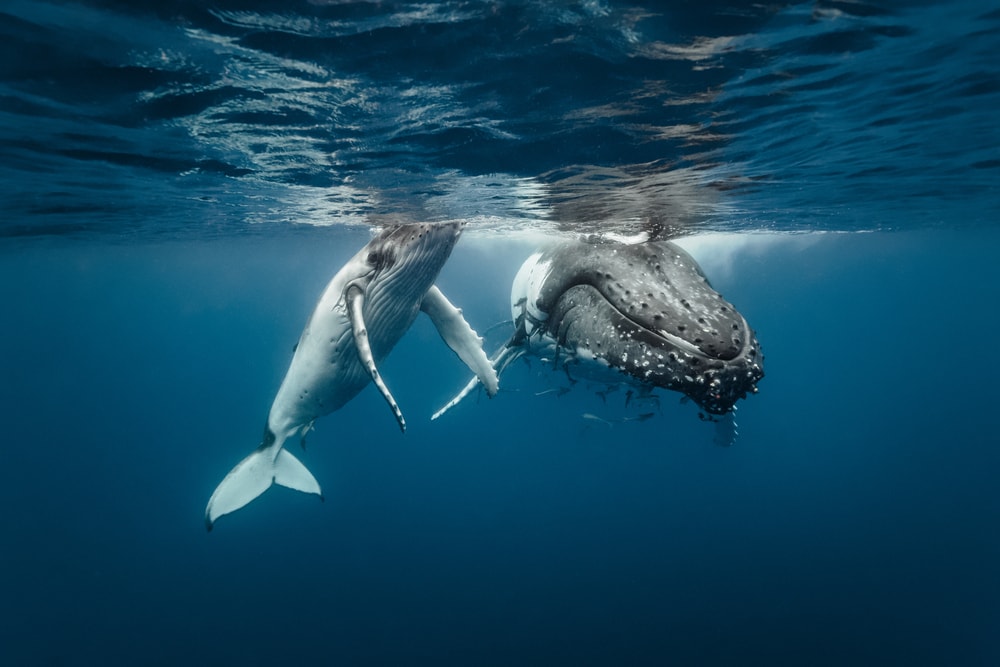
Humpback whale males start singing a lot more in the breeding season. Their songs can be 30 minutes long. They are among the most intricate of any animal.
Some researchers believe the low frequency sounds can be heard up to 10,000 miles (16,093 km) away. Males will repeat these songs over and over again.
Humpback whale males not only construct intricate songs but also fight viciously. Sometimes, a male can even die from his injuries.
Northern Right Whales
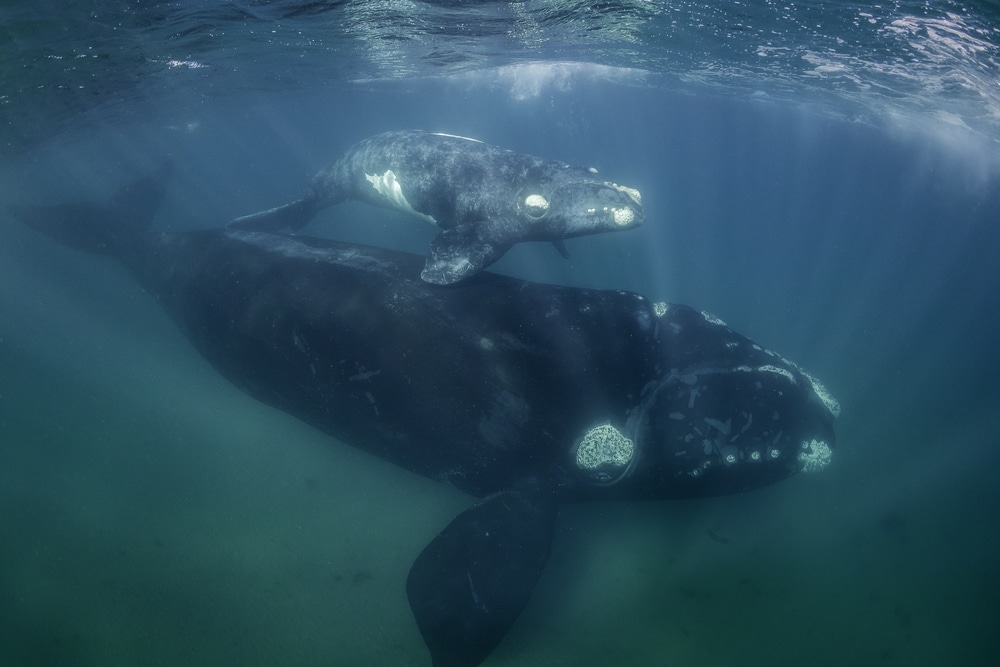
The Northern Right Whale has a colorful sex life. When a female is in estrus, she rolls over on the surface so her genitals are exposed to the air. A large group of around 10 males may be accompanying her, jostling for position.
This is where the male’s four-foot-long (1.2 m) penis comes into play. It is equipped with muscles on either side near the base and is very flexible.
This means the male can adjust it to reach the female’s genital opening at the water’s surface. The female needs to breathe through her blowholes, so she must roll back right side up every five minutes or so to take a breath.
Males stroke her with their flippers or knock her, trying to get her back underwater where they can reach her more easily.
You May Also Like: Are Sharks Mammals Or Fish? Debunking The Misconception
Fun Facts
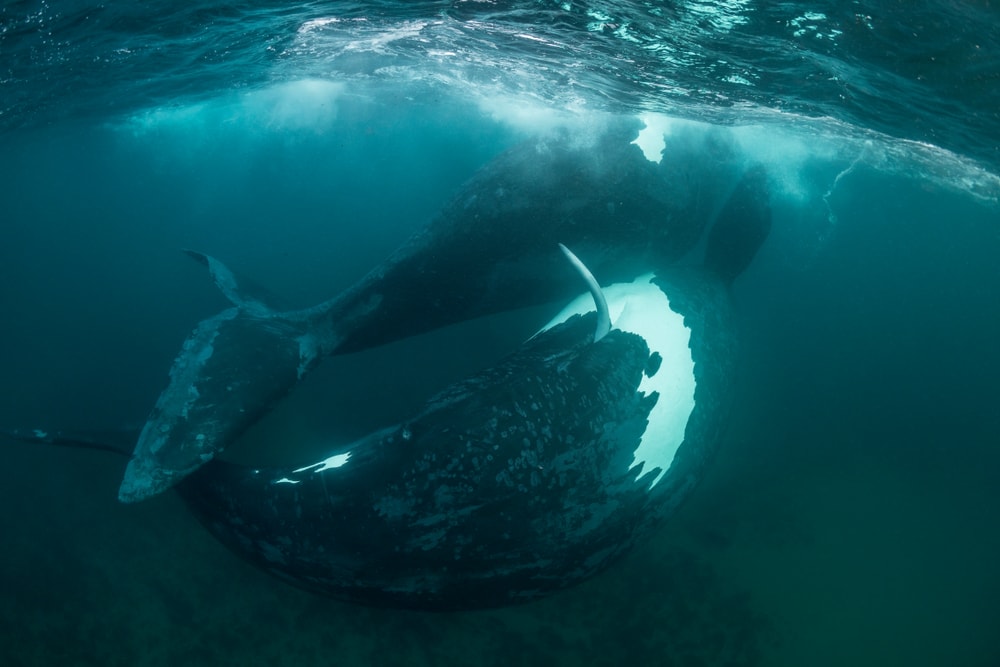
- A newborn orca weighs the same as a motorcycle at 180 kg (397 lb).
- Orca pods are headed by an adult female matriarch and her adult sons and calves.
- 60% of pregnant North Pacific humpback whales will migrate 3000 miles (4,828 km) from Alaska to give birth in Hawaii.
- Baby dolphins nurse for one to three years, then start to learn to fish by playing with them. Nursing has been observed up to 10 years old.
- The spermaceti oil in a sperm whale’s head helps it focus sound and aids it in hunting.
How Do Whales Drink Milk Underwater FAQs
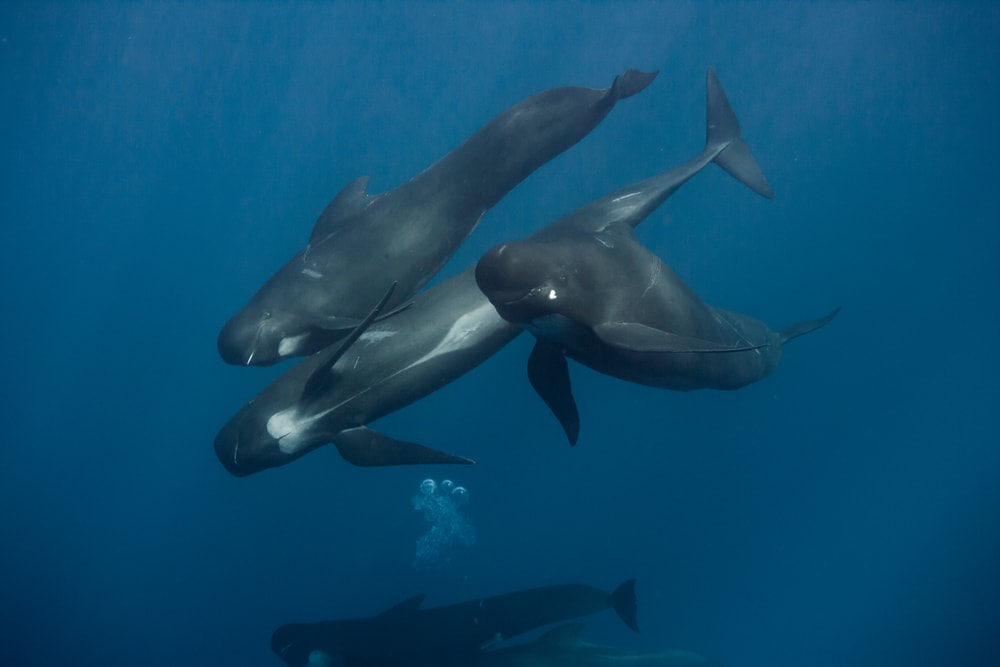
What is a baby whale called?
A baby whale is called a calf. It is still called a calf for around 2 years while it is with its mother. Like cows, a female whale is called a cow and a male a bull.
What’s the difference between a whale and a dolphin?
Dolphins tend to be smaller. They have a larger dorsal fin than whales in relation to their size. Whales have fused neck vertebrae, whilst some dolphins have flexible necks. Dolphins also use echolocation to hunt rather than to communicate.
Do all mammals produce milk?
All mammals produce milk to feed their offspring. Not all do it in the same way. Duck billed platypuses produce milk from mammary gland ducts. They don’t have nipples or teats. Their babies then lick it out of grooves.








